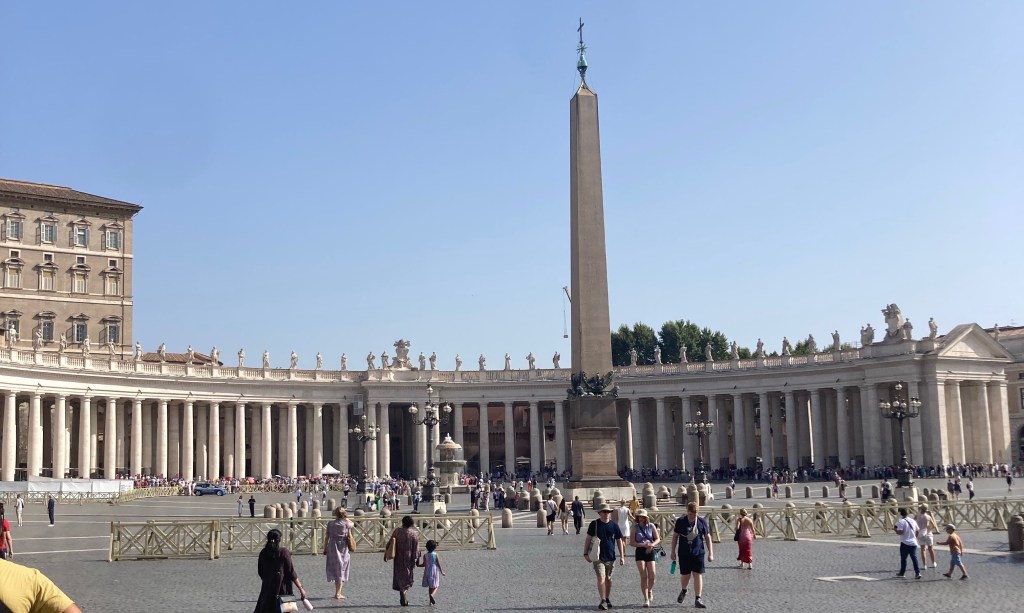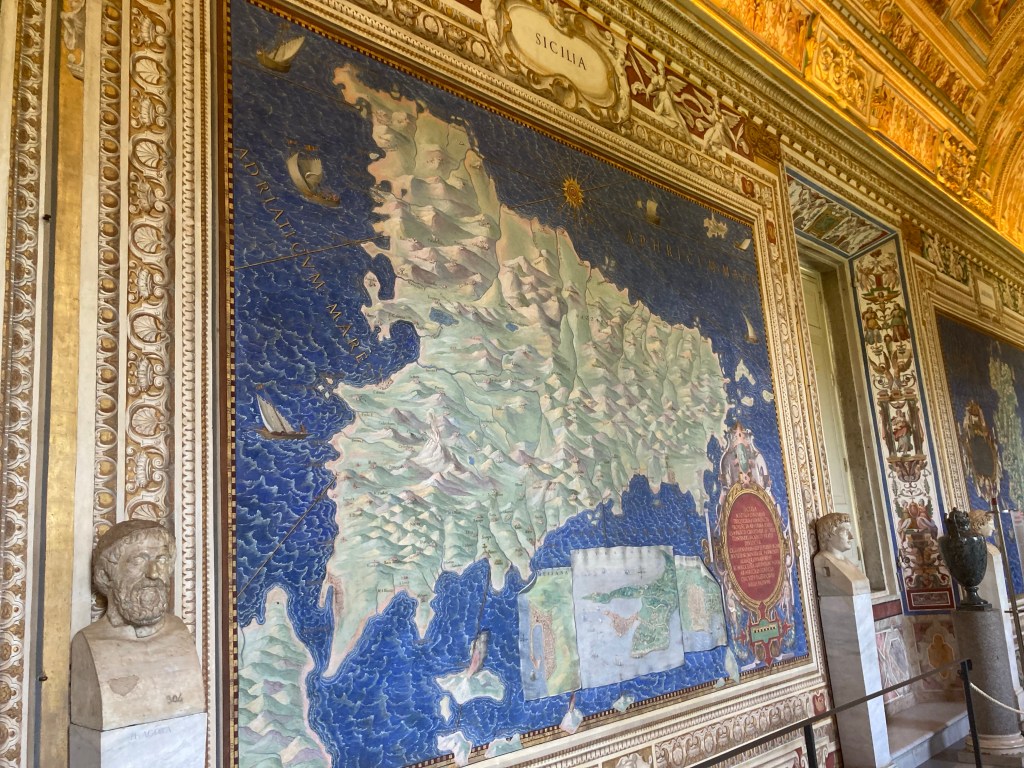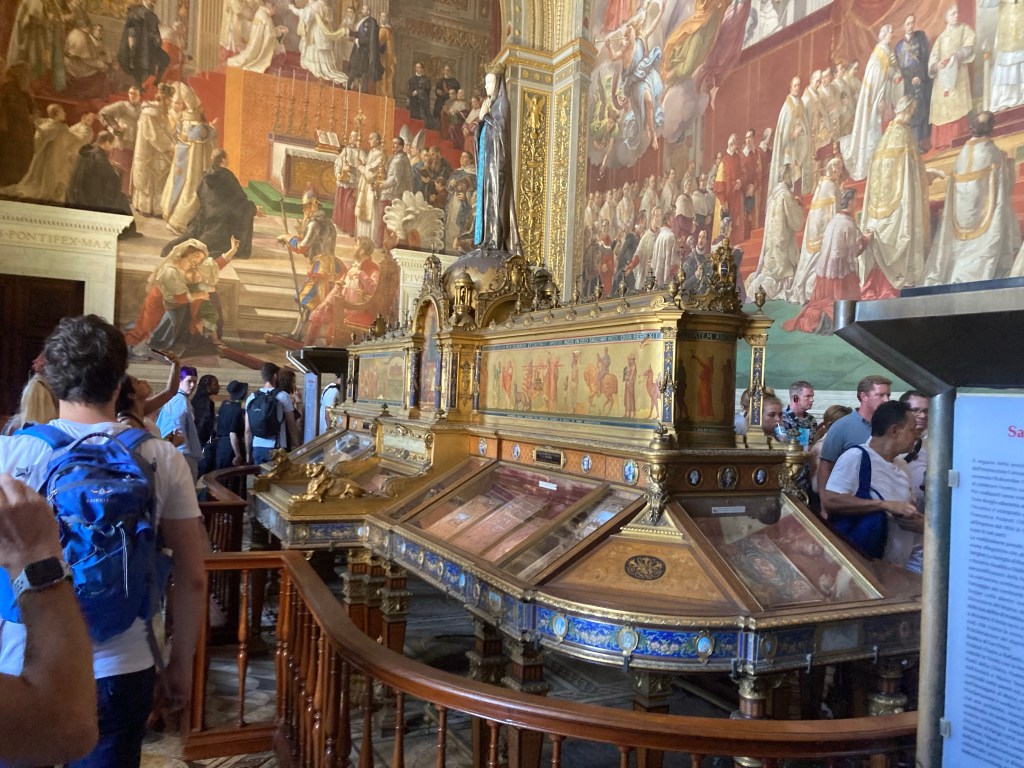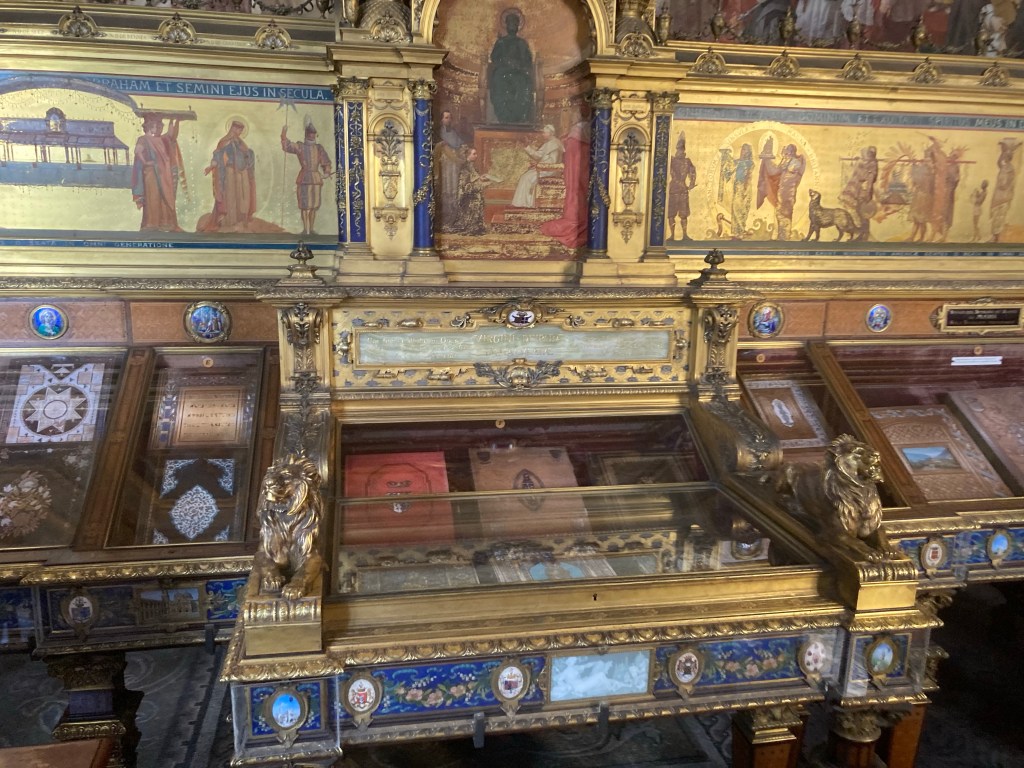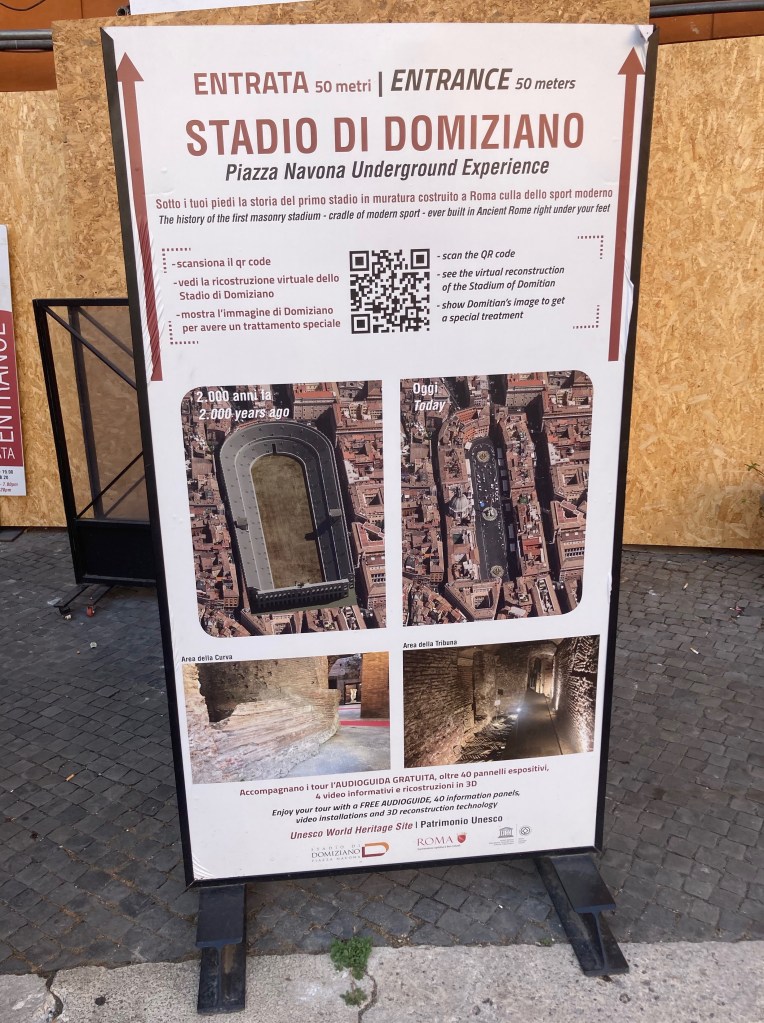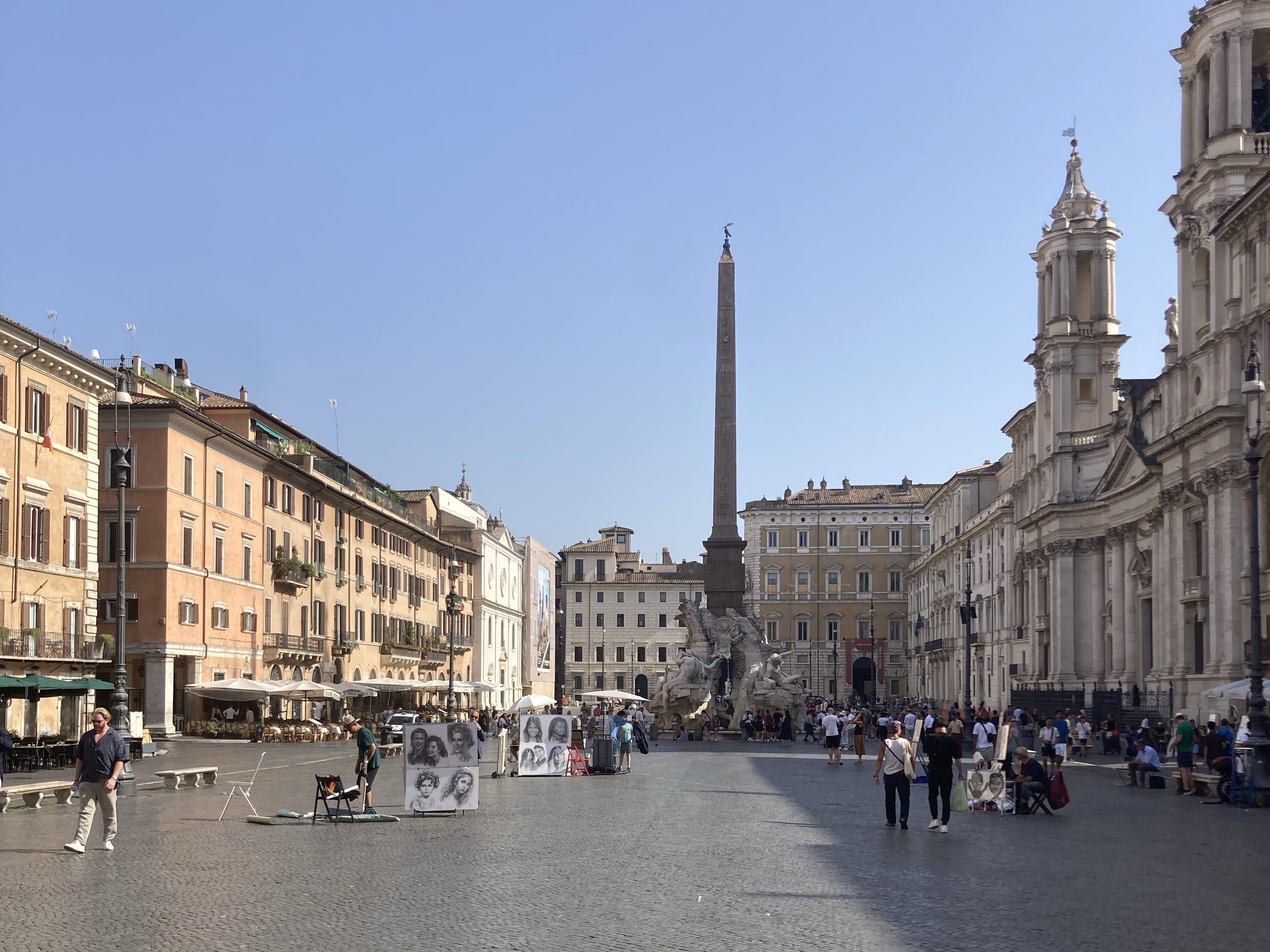One of the main landmarks that we wanted to see while in Rome was Trevi Fountain. It was a good 40 minute walk from the Airbnb, which made it tempting to just grab an Uber to drive us there, but that’s not really what you want to do while in Rome, is it? The temperature was predicted to reach 107 degrees Fahrenheit that day, so walking did seem a little dangerous, but there’s plenty to drink on the way there. It was the right decision because the walk, as usual, was the best part.

We started our trek by leaving the Trastavere neighborhood just south of the Vatican and walking through a tunnel under the Pontifical Urban University. Once we left the tunnel, the Tiber was in view. Crossing the Tiber on the Ponte Principe Amedeo Savioa Aosta bridge, a beautiful view of the Ponte Vittoro Emanuele II bridge with the Castel Sant’Angelo in the background emerged. Once you cross that bridge into the Old Rome neighborhood, there is no denying the beauty and history of Rome.
We headed down the Via de Coronari, a narrow road only really appropriate for pedestrians. The narrow cobblestone road is about the size of an American alley. It’s lined with shops, cafes, restaurants and art galleries. It has a wonderful charm with planters along the sides and folks eating gelato.

We were looking for something to drink as it was already 106 degrees Fahrenheit and found just the place in Piazza Navona. We stopped for a quick drink and walked around the Piazza for a few moments before returning to our trek to Trevi Fountain.

While most of what we came across was accidental, including Piazza Navona, I deliberately went a few blocks out of the way to visit the Pantheon. The Pantheon has an enormous concrete dome and was built nearly 2,000 years ago during the reign of Hadrian. It was built as a temple to all the gods, but in the 7th century was reinvented as a church to St. Mary and the martyrs. It’s an absolute wonder of structural engineering and it still stands as the largest concrete dome in the world.
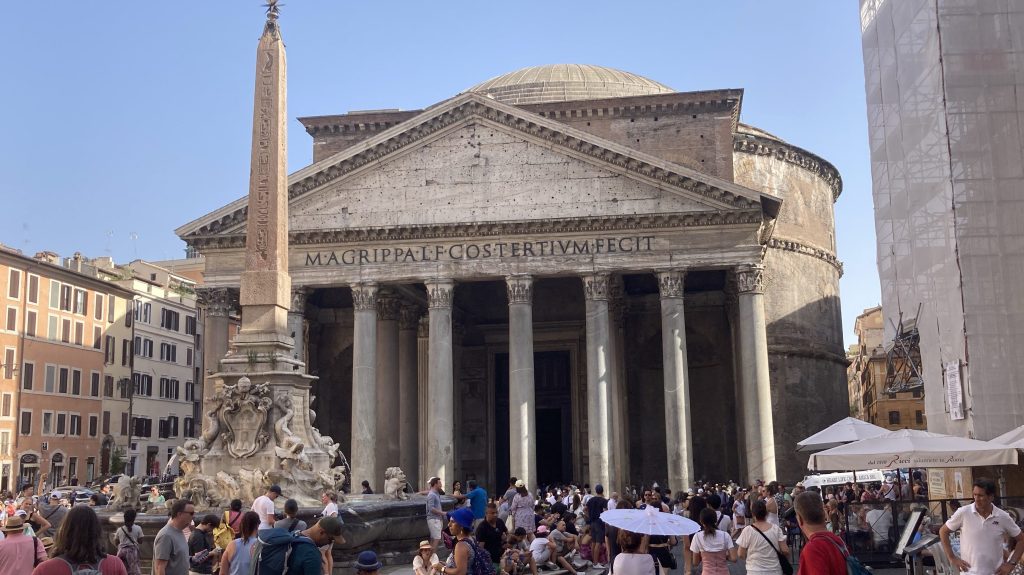
We didn’t walk into the Pantheon. I would have loved to but the lines looked long and we didn’t have an unlimited amount of time. To be honest, Rome is so filled with history that if we stopped to take time at every amazing or historical place, we wouldn’t have made it more than a couple of blocks.

Shortly after the Pantheon, we stopped by a pastry shop, with the idea of getting a pistachio cannoli. Somehow, I said the wrong thing and ended up with a donut filled with pistachio cream. It wasn’t what I wanted but it was delicious.

After all of our distractions, we managed to make our way to Trevi Fountain. It is every bit as beautiful as you would expect and even more crowded than I expected.

Trevi Fountain was completed in 1762 by Architect Guiseppe Pannini after being left half completed by the original architect Nicola Salvi who died in 1751. It was built at the end of one of the aqueducts that supplied Rome with water. It is made mostly of travertine stone.

I can only imagine just how serene this must seem when it’s not wall to wall people, but obviously this was not the case in the middle of tourist season.
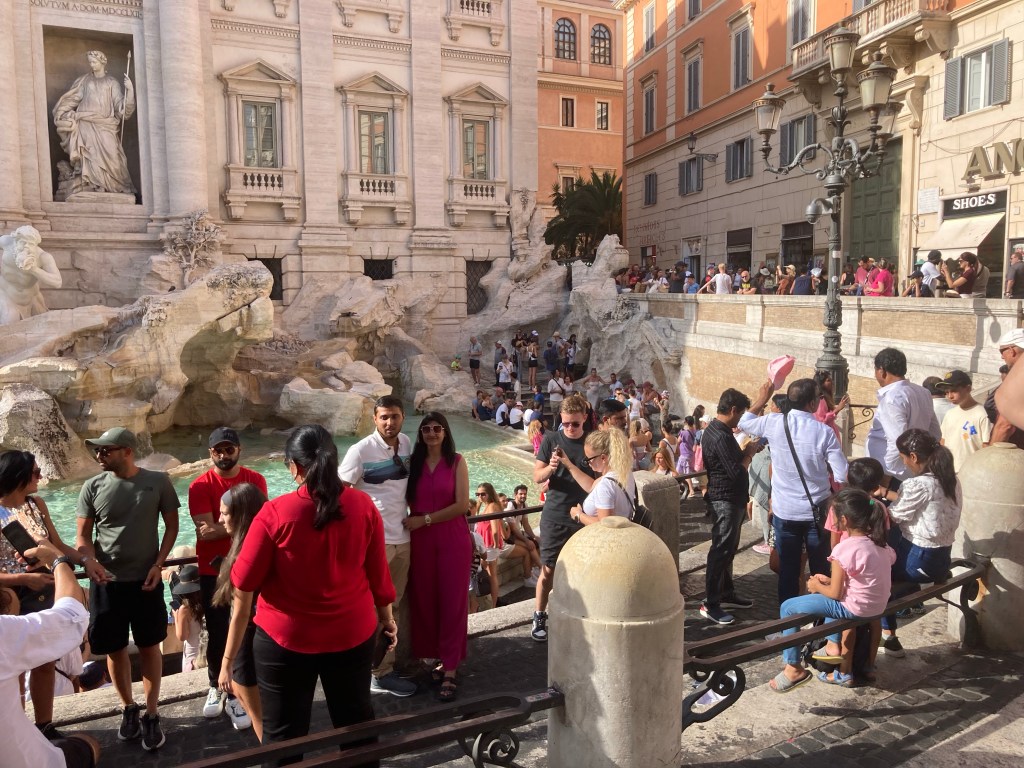
Across from Trevi Fountain is a beautiful Catholic Church named Santi Vincenzo e Anastasio a Fontana di Trevi. It’s a baroque church completed in 1650. Also nearby Trevi Fountain is a United Colors of Benetton which annoyed Jenn by its proximity to Trevi – hey I guess Romans like to shop for overpriced chinos close to beautiful monuments.

On our way back, we got some macaroons from Don Nino. I wish I could tell you if they were good or not, but we never actually had a chance to eat them. We ended up leaving them somewhere when we either stopped for dinner or a drink. They did look really good though.

We stopped in for a quick carry out beer at Drink Art Gallery, where I’m pretty sure I got a Carlsbad beer which seemed pretty forgettable, but the bar seemed pretty cool.
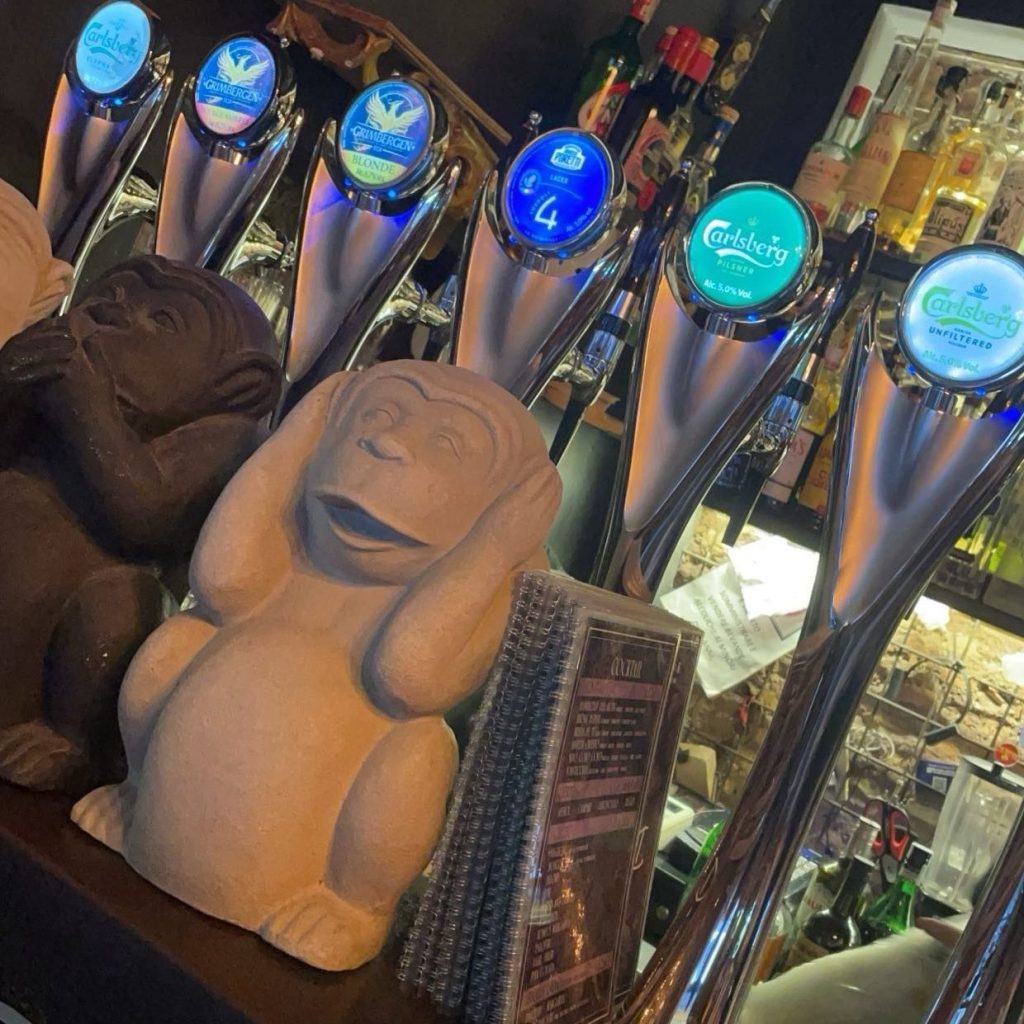
I really enjoyed the narrow roads where all of these nice bars and restaurants were located. It made for a calm, yet beautiful and interesting walk.

We also stopped at a rooftop bar called La Terrazza del Cèsari where Jenn was introduced to unpitted green olives. She loved the olives but hated the extra effort involved. The sun was unrelenting up there and we quickly finished up our drinks and left. It was beautiful, but not the best place to be when its hot.

We also managed to stop for a quick drink at some sports bar called La Botticella of Poggo Giovanni, you know, typical sports bar name. They had a lot of Steelers memorabilia, which checks out, because Steelers fans will live anywhere except Pittsburgh. All joking aside, that bar had a great beer selection and if we weren’t essentially on a pub crawl at this point, I would’ve liked to stay longer.

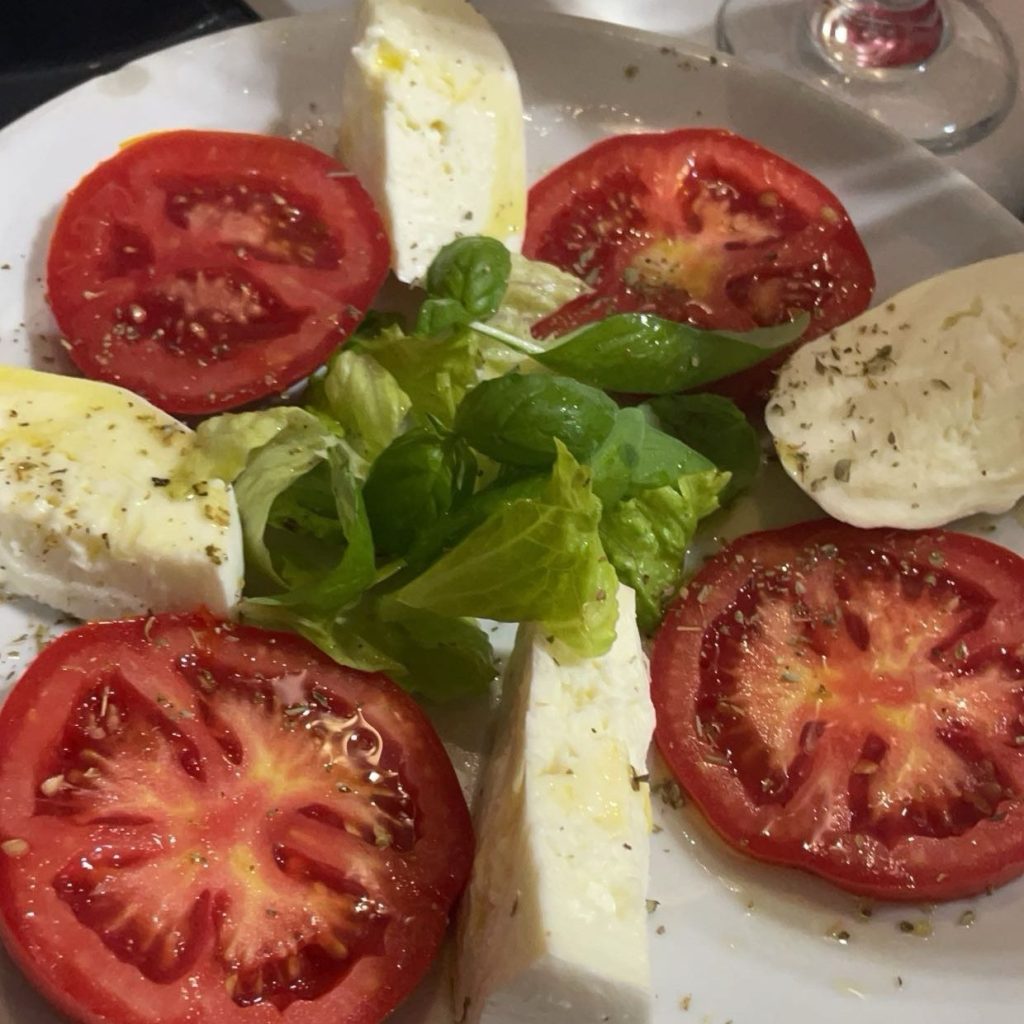
We finished the evening with some pasta and antipasti from Ristorante Pizzeria Castello on Via Della Fornaci in the neighborhood where our Airbnb was. It was still really hot and the only available table was inside which was uncomfortable but the food was amazing. We had caprese, pesto pasta and cacio de pepe. Everything was typically Italian, simple, beautiful and perfectly prepared. We finished with a shot of limoncello that apparently I forgot about until I made a comment to Jenn about never trying limoncello and she laughed at me and said “Yeah, ya did.” Maybe it was delicious, I don’t know.

This was one of my favorite days of our vacation. I honestly didn’t want to leave the air conditioned Airbnb because I knew just how hot it was going to be. We spent the morning at the Vatican and the afternoon on a nice walk to Trevi Fountain. The walk was great because we took our time and when we wanted to check out a bar, restaurant or shop, we stopped. We allowed the city to guide us instead of having a preprogrammed set of things we needed to see. I lost 10 pounds from sweating, but it was great.



